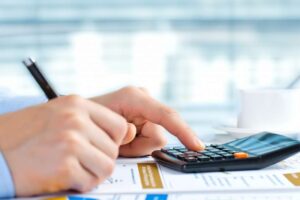
Depending on your plan, you can sell unlimited products, recover abandoned carts, manage inventory and complete payments. Many social media platforms offer in-platform buying and selling features, enabling small businesses or personal brands to sell directly to audiences without an online storefront. You can also sell to social audiences with a Shopify Starter plan, an economical alternative to a full ecommerce website.

Online shopping goes mobile
Compared to some providers that levy fees, such as Shopify, this is a nice benefit. Beyond this, Ecwid checks a lot of the boxes when it comes to what we look for in an online shop, from instant site builders and free design themes to free site hosting, even for its free plan. We also found this provider’s attention to security noteworthy, as it includes security updates, data backups and privacy protection.
The platform still uses the PHP programming language, also making it more difficult to use. Designing and building a Magento site may require professionals to assist you in your journey. This makes Magento better suited to large enterprises looking to extend their online retail business. In 2019, Shopify added fulfillment networks, customer-facing software tools, 11 new languages, and new software development kits to their platform. Therefore, it’s important to choose the right ecommerce portal, as it can make all the difference between success and failure.
Which ecommerce platform is best for startups?
- Plus, advertising online is cheaper, especially with organic blog posts and social media that can drive traffic to your site.
- Its website contained thousands of products and tons of integrations, making content management exhausting.
- You can also add services like local delivery and take advantage of the Shopify Fulfillment Network.
As of 2020, about 10-11% of surveyed manufacturers and distributors revealed that about % of their revenues was generated through ecommerce portals. Of these two, Wix’s ecommerce solution works best for small businesses. You can set up your website and build the ecommerce components using a free subscription. Once you’re ready to start processing payments, Wix will charge you $23 without any additional transaction fees. They’re reducing or eliminating human error and cutting down on paperwork and travel.
If you’re on a budget, you’ll be pleased to hear that Big Cartel does offer a free version. As is usually the case, the forever-free version comes with limitations, allowing for only five product listings. Even the lowest-cost paid plan, which starts what is a three-way match in accounts payable gep glossary at $15 per month or $12 per month billed annually, caps the number of products you can have at 50. Compared to its competitors, Big Cartel is overall the cheapest, so these limitations seem to align with the price tag. As with most of the providers we surveyed, a self-help knowledge base is the first-line resource Shopify offers for customers in need of answers.
Starting an ecommerce business: 8 steps to launching an online store
You’ll also want to account for payment processing fees and charges for adding third-party integrations. Remember, if hosting isn’t included, you’ll also need to figure in the expense. If you’re serious about selling, it makes sense to pick an ecommerce platform that will help you track stock levels, manage orders, and automate fulfillment. Not strictly an ecommerce platform, WooCommerce is a free, open-source plugin that transforms a WordPress website into a fully functional online store. Shopify supports selling through your website, directly on social media and marketplaces, wholesale to other retailers, and in-person with Shopify POS. Features like abandoned cart recovery and targeted email campaigns help capture more sales, while tools five types of interest expense three sets of new rules for international selling make cross-border ecommerce simple.
The best ecommerce software for you might differ from the best platform for another merchant—you need to consider your unique business goals and what tools will help you reach them. It allows you to accept payments, track orders, and manage inventory across multiple channels. It’s an eCommerce sales revenue vs profit solution that portal owners use to improve their online store, and the investment in eCommerce portal development is an excellent way to move to more automated solutions.
As is the norm among the e-commerce platforms we surveyed, there is a comprehensive online knowledge base where you can look up answers to common queries yourself. Best practices in search engine optimization (SEO) make it easier for consumers to find your online shop, which can help boost business. Shift4Shop helps users create SEO-optimized sites with SEO features built right into e-stores and includes a suite of SEO tools in the marketing section of each account’s online store manager. The provider further ensures pages are mobile-friendly, which is critical since search engines such as Google prioritize mobile-friendliness when ranking sites. Consider not just the platform’s store builder, but also any additional business tools.

 Háblanos por WhatsApp
Háblanos por WhatsApp